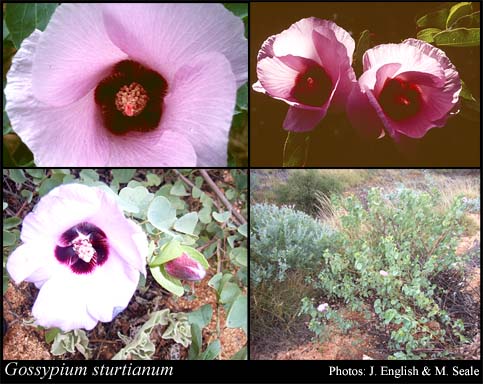- Reference
- Victorian Naturalist 64:9 (1947)
- Conservation Code
- Not threatened
- Naturalised Status
- Native to Western Australia
- Name Status
- Current
Shrub, 0.7-2 m high. Fl. blue-purple/pink, May to Oct. Sand, limestone. Coastal plains, stony creek beds.







Scientific Description
Herb or shrub. Stems glabrous. Leaves 35-75 mm long, 20-40 mm wide, not lobed; margins entire; glabrous; stipules present and persistent to older leaves or present but early deciduous (only visible on youngest leaves), 8-10 mm long. Perianth clearly of two whorls (calyx and corolla), the corolla obvious and prominent. Pedicel present, 8-10 mm long; indumentum present, with stellate hairs. Epicalyx (extra segments or 'bracteoles' immediately below the calyx) present, 6-9 mm long, the lobes fused less than half their length, indumentum present, stellate hairs present. Calyx green, 25-30 mm long, the lobes fused less than half their length, stellate hairs present. Corolla pink, blue or purple, 40-45 mm long, glabrous. Stamens many, united and arising from a staminal tube around the style; filaments present, 1.2-2 mm long; anthers 1-1.1 mm long, indumentum absent (anthers glabrous). Ovary hairs or scales present, simple hairs present, stellate hairs present; style 1, with a lobed or capitate stigma, 19-21 mm long, with one style branches or lobes, mostly glabrous. Flowering time May, June, July, August, September or October. Distribution Botanical Province Eremaean, IBRA Bioregion Pilbara or Carnarvon.
Distribution
- IBRA Regions
- Carnarvon, Central Ranges, Pilbara.
- IBRA Subregions
- Cape Range, Hamersley, Mann-Musgrave Block.
- IMCRA Regions
- Ningaloo.
- Local Government Areas (LGAs)
- Ashburton, East Pilbara, Exmouth, Ngaanyatjarraku.